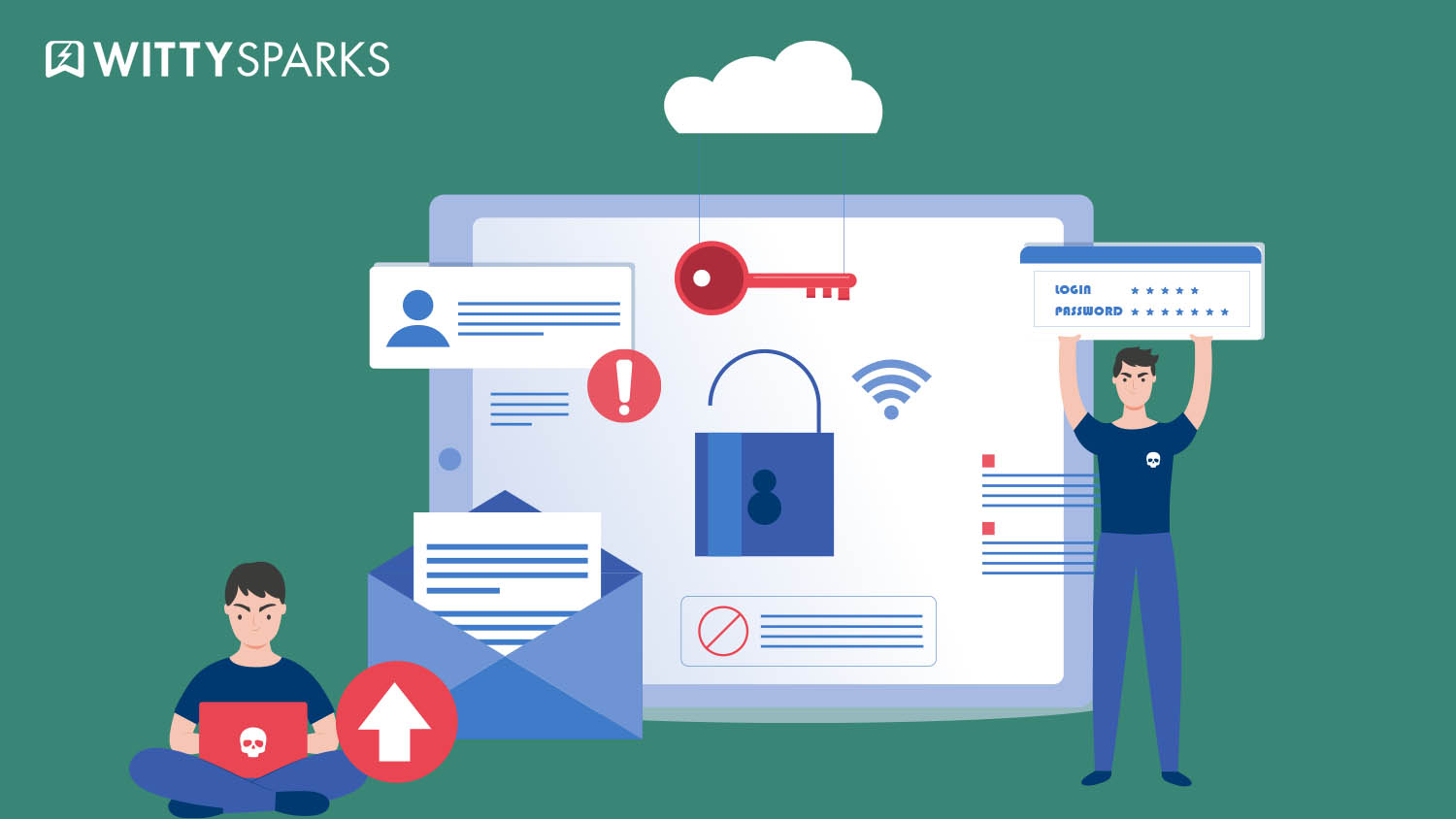Security breaches are common for businesses across the globe. Unfortunately, most breaches get access via silent and authorized options that are deeply embedded into the system. Rarely, they start with brute force and hence are hard to detect early on.
On this page
TL;DR
Privileged accounts control your most sensitive systems, and attackers know it. Without clear visibility, rotation, and control, these accounts turn into silent vulnerabilities. Privileged Access Management (PAM) tools like ManageEngine PAM360 help businesses secure credentials, monitor sessions, enforce time-bound access, and simplify compliance. The result? Fewer breaches, faster audits, and a culture of accountability. Read more about the same in this blog.
And privileged accounts sit at the center of any IT infrastructure. These are the credentials that hold elevated rights across databases, servers, cloud consoles, and administrative tools. For attackers, privileged accounts are golden keys to the kingdom.
What makes these accounts dangerous is not just the level of access they offer but the silence with which they can be compromised. These credentials can easily bypass the multiple layers of traditional security.
The worst part? Standard security measures don’t get triggered with these risks. So once these credentials are compromised, all the lateral movement, data exfiltration, and system manipulation become easy.
In simpler terms, it’s like someone walking into your server room with a master key. So when they leave, there won’t be any traces to track them.

The Cost of Unchecked Privileged Access
You will often see headlines about breaches related to stolen or misused credentials. These issues are so common that a lot of cyber criminals use them to push ransomware to shut down pipelines, attack payroll servers, and even pull sensitive insider data from cloud storage.
Untracked superuser activity creates visibility gaps that make incident response harder and slower. IT teams struggle to pinpoint when and how unauthorized activity began.
Regulatory fines, operational downtime, and loss of customer trust spiral quickly. Business continuity suffers while teams scramble to patch holes retroactively.
In many environments, privileged accounts are shared among teams, passed through chat apps, stored in spreadsheets, or embedded in scripts.
Credentials outlive the users they were issued to, with no rotation or expiry policy in place. The longer these practices persist, the wider the exposure window becomes.
The Identity Management Blind Spot
Conventional identity and access management (IAM) systems focus on authentication, authorization, and role-based access. They verify who logs in, what roles they hold, and what general permissions they need.
However, IAM often lacks the depth to manage the lifecycle, visibility, and behavior analytics of privileged accounts.
Privileged access isn’t just about login credentials. It’s about controlling what those credentials can do and ensuring each action is logged, reviewed, and revoked when no longer necessary.
Businesses face mounting compliance pressure to establish clear audit trails. Regulations like GDPR, HIPAA, and SOX require demonstrable control over sensitive data and access mechanisms.
IAM handles the front door. Privileged Access Management (PAM) handles the master keys inside. Treating them interchangeably leaves organizations exposed to the most potent form of insider and external threat.
Shadow Access and Credential Creep
One of the lesser-discussed risks in cybersecurity strategy is the proliferation of dormant or unnecessary privileged credentials. Developers may provision temporary access during sprint cycles.
Consultants may receive elevated rights for onboarding. System upgrades might require service accounts that persist long after deployment.
This is how organizations slowly accumulate shadow access. Over time, credentials multiply without documentation, review, or deprovisioning. Eventually, no one knows who has access to what. Attackers exploit these blind spots with minimal resistance.
Credential creep also emerges when employees change roles internally. A marketing lead who once needed access to analytics servers may move to a new role but retain outdated permissions. These leftover rights, once harmless, become entry points when accounts are phished or compromised.
Privileged Access Management: The Line of Defense Most Enterprises Lack
Organizations that prioritize cybersecurity maturity eventually land at one common realization: they need to get a grip on privileged access. This is where Privileged Access Management platforms step in.

ManageEngine PAM360 is among the enterprise-grade tools designed to secure, control, and monitor privileged access across IT environments. It’s built for hybrid and cloud-first businesses that can no longer rely on manual credential tracking or siloed audit logs.
Instead of scattering credentials across departments, PAM360 centralizes, encrypts, and auto-rotates them. This drastically reduces the attack surface.
It also introduces just-in-time (JIT) access workflows. Instead of leaving superuser rights permanently enabled, PAM360 allows temporary access with automated expiry.
Every access request passes through approval workflows. Every session is recorded for future review. This changes how IT thinks about trust, from static permissions to time-bound, purpose-bound access.
Beyond credentials, PAM360 offers real-time alerts and behavioral insights. If an account starts accessing systems outside its usual time or scope, the system flags it. This adds a behavioral layer to access control, one that adapts to emerging threats instead of relying solely on predefined rules.
Integration also plays a big role. PAM360 works with Active Directory, cloud providers like AWS and Azure, and other IAM systems. It doesn’t aim to replace them. It complements them by bringing specialized control over what standard IAM systems miss.
Features Built for the Real World
Privileged Access Management platforms like PAM360 respond to clear, persistent pain points that security leaders face daily.
Here’s what it offers:
- Credential Vaulting: Stores privileged credentials in an encrypted vault so passwords never circulate unsecured across teams.
- Automated Rotation: Regularly rotates passwords and keys to eliminate long-standing credentials that attackers target.
- Session Monitoring: Captures and records every privileged session with full video playback for audits or investigations.
- Access Workflows: Enforces approvals and time-bound access to ensure accountability at every step.
- Granular Policy Controls: Gives IT teams fine-grained precision in defining access scopes, reducing unnecessary privilege.
- Audit-Ready Evidence: Generates tamper-proof logs and replayable session data that map every action back to a user, time, and purpose.
- Compliance Made Simple: Turns regulatory audits into a byproduct of strong access governance with built-in forensic capabilities.
How Privileged Access Management Impacts Businesses?
The presence of a mature Privileged Access Management platform changes how organizations think about access altogether. Instead of granting and forgetting, they start to treat access as a privilege. Teams grow more comfortable with granting access temporarily rather than indefinitely.
Downtime caused by unauthorized changes goes down. Investigations become faster due to clearer audit trails. The number of unused or orphaned accounts drops as credential lifecycle management kicks in.
Employees no longer rely on unsecured tools to share credentials. The IT ecosystem becomes leaner, more accountable, and more agile.
For example, 5B, Central America’s largest ATM network, adopted PAM360 to tighten privileged access across its financial systems. Their goal was to implement JIT access for RDP and SSH, centralized credential management, session recording, and integrated access requests with ITSM workflows.
Result? They were able to reduce their risk exposure, improve visibility, and streamline operations
According to a Forrester report, over 80% of breaches involve compromised credentials. With PAM, organizations move to a pre-emptive posture. They catch abnormal access behavior early, revoke unnecessary rights promptly, and ensure sensitive systems are always under control.
The Shift Is Cultural
Adopting a Privileged Access Management platform is a cultural reset, along with the security upgrade. It signals to teams that access must be earned, reviewed, and revoked with discipline. It encourages developers, admins, and business users to respect boundaries and embrace transparency.
Security leaders start asking deeper questions about who accessed the system, why, for how long, and with what outcome. This shift in questioning triggers better policy design, sharper alert thresholds, and cleaner operational handoffs.
When implemented well, Privileged Access Management becomes invisible. It removes friction by automating access requests, approvals, and expirations. Employees do not feel restricted anymore. Security teams get the visibility they need without becoming bottlenecks.
Protecting the Privileged Accounts
Privileged accounts will always exist. The question is whether they remain guarded or exposed. In the modern threat landscape, where attackers target credentials before they touch firewalls, visibility and control over privileged access is no longer optional.
Platforms like ManageEngine PAM360 provide that visibility. They turn scattered credentials into controlled keys, random sessions into auditable records, and static access into purpose-based workflows. It’s all about knowing exactly who holds the keys, when, and why.
Security has to be like a wall with a spotlight. And Privileged Access Management puts that spotlight on the accounts that matter most. I hope this blog has offered you a much-needed insight into Privileged Access Management. I would recommend you explore our website for more such informative articles.
FAQs
What is Privileged Access Management (PAM)?
PAM is a cybersecurity strategy that controls and monitors access to critical systems by users with elevated permissions, such as admins, developers, or service accounts.
How does PAM360 improve security?
ManageEngine PAM360 encrypts credentials, auto-rotates passwords, records sessions, and enables just-in-time access. The best part? It does all this, and still maintains audit-ready logs and compliance support.
Is PAM only for large enterprises?
No. Any business with sensitive data, cloud infrastructure, or compliance requirements benefits from implementing a Privileged Access Management solution.




